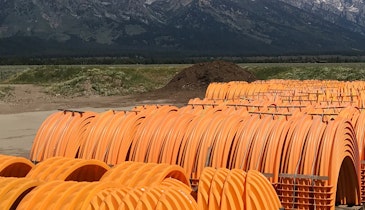Interested in Education/Training?
Get Education/Training articles, news and videos right in your inbox! Sign up now.
Education/Training + Get AlertsWe have all heard the ongoing joke before: Our industry will soon be expected to do everything with nothing. Only nobody is laughing.
As utilities struggle to sustain acceptable levels of service, they are faced with the increasing challenge of finding creative funding mechanisms to keep the systems running. Until something bad happens, the water and sewer infrastructure continues to be out of sight and out of mind.
Many of the country’s small — and some not-so-small — water and sewer providers rely on State Revolving Fund (SRF) programs to maintain their systems. By providing low-interest loans at or near U.S. Department of Treasury rates, SRF programs provide significantly lower rates than municipal bonds and can reduce the lifetime cost of a project by over 25 percent. Loans are paid back and provide a self-sustaining program at a low cost with minimal risk to the federal government.
SRF programs have been very successful. They are also a major source of funding for municipal water and wastewater projects, including consent decrees and consent orders with the EPA to reduce sewer overflows throughout the country. But they are also limited. Historically, many municipalities within a state would compete for the funding, but a large, well-deserving project could drain a state’s program.
SRF programs are the lifeblood of many small utilities, and this year, EPA budget cuts will reduce this funding by up to 20 percent. At a time when EPA enforcement actions are being ramped up, the decrease in funding for SRF programs does not make sense.
Based on the success of this program, it would make sense to expand rather than contract, particularly in these troubled economic times. Municipalities are not only struggling to fund their bare necessities, they are uncertain how the next election will affect the availability of funds. Elected officials share that uncertainty and often hesitate to provide support for any spending, even for necessary infrastructure. As we move forward, it is clear that water and sewer providers must turn to the use of more innovative financing mechanisms and rely less on federal and state funding sources.
One mechanism that has been used successfully is the Public-Private Partnership (PPP). These partnerships help municipalities maintain an acceptable level of service while also serving the interests of the private sector. In fact, these partnerships can help municipalities meet or even improve the level of service during challenging economic times. They are also supported by federal agencies like the EPA and DOD, as well as organizations like the U.S. Conference of Mayors, since they promote less reliance on federal funding. This type of innovative financing will be critical to maintaining acceptable levels of service as well as meeting the demands of EPA consent decrees.
NASSCO continues to serve the trenchless industry by setting industry standards for the assessment and rehabilitation of underground pipelines and assuring the continued acceptance and growth of trenchless technologies. As taxpayers and members of the water and wastewater industry, we need to also take responsibility for telling our elected officials that clean water, and eliminating SSOs and CSOs, is important and will require a combination of market-based funding mechanisms and low-interest loans. F
Ted DeBoda is executive director of NASSCO. He can be reached at director@nassco.org. NASSCO is located at 11521 Cronridge Drive, Suite J, Owings Mills, MD 21117.





